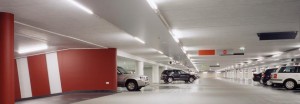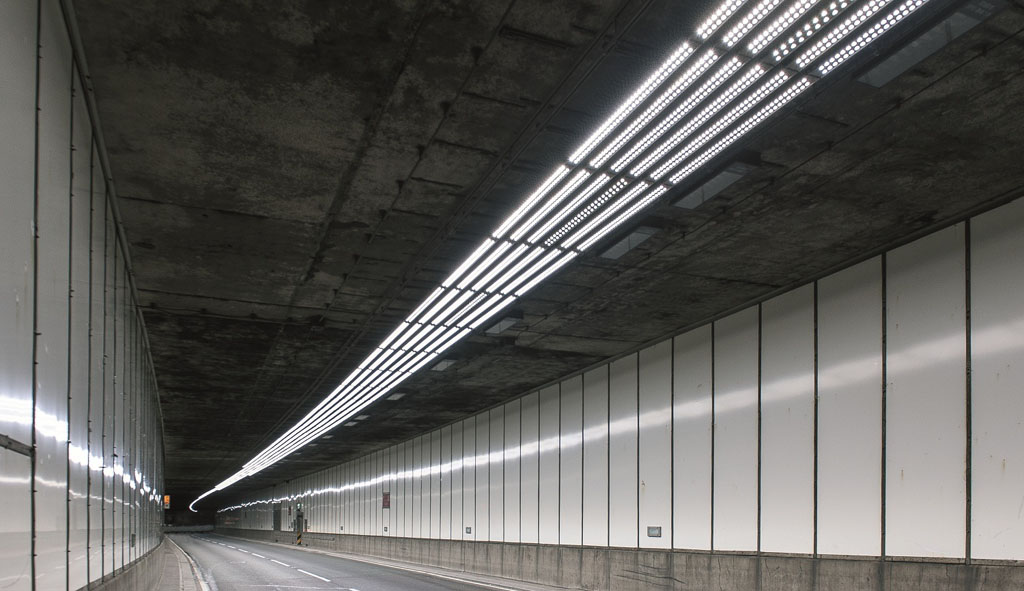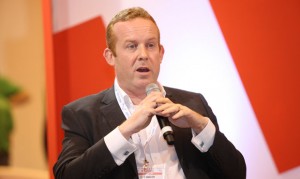TAG | energy efficiency
12
Light at the end of the tunnel (and slightly dimmer light in the middle)
Comments off · Posted by admin in LED, Philips LED
Until recently, this tunnel in Stoke-on-Trent, England, had to be regularly closed to change failed lamps, causing disruption to drivers.
I have reduced my overall maintenance costs, saved a substantial amount of money in energy costs, reduced the carbon footprint and reduced the risks for the operatives’Paul Diamond, Amey
amey · energy efficiency · energy saving lighting · highway lighting · led lighting · Novel Energy Lighting · philips led · philips linear led · street lighting · tunnel lighting
12
UK government ‘must recognise the hidden benefits of energy efficiency’
Comments off · Posted by admin in LED, Uncategorized
Drax power station – Energy efficiency, including LED lighting, means the UK needs fewer of these
energy efficiency · energy efficient lighting · LED lamps · led lighting · Novel Energy Lighting
20
Energy charity tackles ‘scandal’ of inefficient buildings
Comments off · Posted by admin in LED
The UK’s failure to ensure industrial and commercial buildings are comfortable and energy efficient is a ‘scandal’, according to energy charity the National Energy Foundation.
The charity has launched an online knowledge portal and an expert guide, published as an e-book, to combat what it sees as the UK’s failure to produce energy-efficient non-domestic buildings.
‘The failure of many countries to produce buildings that are comfortable with excellent energy performance is a scandal,’ says Liz Reason, trustee at the foundation.
The guide is designed for professionals in the construction and design sectors, including building owners, occupiers and operators. It outlines the requirements of a good-quality, low-energy building, the stakeholders that must be engaged, and ways to reduce energy use and costs.
‘Designing and building low-energy buildings is not difficult; it just needs some basic building physics and a clear, common language for talking meaningfully about energy performance with all those in the building cycle,’ said Reason.
The online platform, Building Performance Exchange, is a portal where non-domestic facility managers and other building professionals can record their experiences, solutions and thoughts on building better, more energy-efficient buildings.
Dr Kerry Mashford, chief executive of the National Energy Foundation, said: ‘Both the e-book and the online facility take a practical and common sense approach and provide a valuable contribution to closing the gap between the expected and actual energy performance in the built environment, as well as the knowledge gap that exists in the sector.’
energy efficiency · energy-efficient buildings · facility management · led lighting · lighting · low energy building · low energy lighting · National Energy Foundation · Novel Energy Lighting
16
Time to take Stock – LED Lighting in Retail
Comments off · Posted by admin in LED, LED downlights
Lux Magazine reports:
Time to take STOCK
Retail lighting has come a long way in the last couple of years: LED payback time has shortened and expectations have risen, but end users still have to check for dodgy specs. Kathrine Anker reports:
Every time Lux brings together manufacturers, designers and end users to discuss retail lighting, things have changed dramatically since the last time. It’s not long ago that LED was a prohibitively expensive technology for some, and not good enough for others, but things have moved on pretty far since then.
Our latest retail lighting forum, in association with Microlights, got off to an optimistic start, acknowledging that a lot of education has happened. ‘I think all clients have become discerning,’ said Theo Paradise-Hirst, head of lighting design at NDYLight. ‘They’ve realised that lighting is the absolute key driver to making retail work. There is more knowledge and appreciation of colour rendering and you can have conversations with clients that you’d never have had 10 years ago about the exact colour temperature and materials.’
Adding to the optimism was a consensus that payback time for LED lighting has come down to a level that will please most finance directors. Leases can be short in retail, so a quick return on investment is more important than it is in other sectors. Three to five years appeared to be the accepted threshold for most end users around the table, including those responsible for lighting in Sainsbury’s, Harrods and John Lewis, and they all agreed that we are getting there.
From the suppliers’ perspective, the maturity of the UK lighting market is to blame for the slow climb toward the tipping point. ‘Retailers in the UK have been very switched on for a long time and market prices for conventional technology are very low,’ said John Chamberlin, sales director at Microlights. ‘Because the price point is so low in the traditional lighting market and you’re starting from a very low price point, it’s taken this long for LED solutions to pay back. But that tipping point is gone now – we’re getting under two-year paybacks in some cases.’
Hitting the tipping point where cost is no longer prohibitive means some end users can start to think about using LED luminaires not just as a secondary light source but as the main one, said lighting designer Keith Ware: ‘We’re starting to see more use of LED as the primary light. For the first time, it feels like LED is actually a credible technology, that we can start to talk to our clients about full LED schemes. Retailers are willing to go with it because they are starting to look at the whole life cycle and the payback.’Tipping point aside, payback time still depends on what you’re replacing. Alan Patton, M&E manager at B&Q, said: ‘If you’re replacing T5, they are very good already so the payback time of a retrofit will be five to seven years. You can still get your energy consumption down by switching from T5 to LED, but it’s at a cost.’
Horses for courses
Despite the LED hype, retail estates are still predominantly lit by fluorescent T8 – LEDs make up less than five per cent of fittings in retail stores, according to a recent survey conducted by BRE. And ultimately, as Phil Caton, director of PJC Light Studio, pointed out, the best system is the one that delivers. ‘If you’ve got a high ceiling you’ll struggle to get the same punch from an LED fitting as you’ll get from a metal halide, unless you significantly increase the size of the fitting – and nobody wants to see big, clunky fittings in high-end retail stores,’ Caton said.
He added: ‘We get the feedback that LED doesn’t give the same depth – the quality of light is much flatter, even when you play with contrast ratios. When there are multiple LED sources in a fitting we have the problem of fringing and shadows around the product, and dimming still gives problems with modulations, so LED won’t be the total solution for the foreseeable future.’
Theo Paradise-Hirst added: ‘Over time some LEDs don’t render colours as well. It’s not just the output, sometimes you have to be aware that there might be colour changes. If you go to galleries that are lit with LED, they look great on day one but after a while something
MANAGING PERCEPTIONS
Light levels can get shamefully high in retail and it often falls to designers to argue for a more restrained approach. ‘Competing shops in a beauty hall don’t look at the relative brightness in the room, they just want to have the brightest shop. So light levels go up and up, completely unnecessarily and the products end up looking all bleached out,’ said Maida Hot, managing director of lighting design company GIA Equation. ‘Trying to find a balance that creates a luxurious feel is quite a challenge. Everyone puts in more, just in case.’
Most of the designers taking part in our retail lighting forum had encountered clients with excessive and unnecessary light level demands. ‘It’s all about perception,’ said Keith Ware. ‘When a client says ‘I want 1,000 lx’, that’s not a lighting brief – that’s just a statement. You need to ask, what is the lit effect you’re trying to create?’ Ware told the roundtable that his company, Dalziel and Pow, successfully convinced Primark to bring down the light level in its shops to below 1,000 lx. ‘We arranged a test with a lighting consultant to prove to Primark that they didn’t need 1,500 lx everywhere. You could bring the level down to 800-900 as a general average – of course with higher contrast on the walls and better vertical on the fixtures off the aisles. But we cheated a little bit – when we did the test we reduced the light to the level we wanted before the test started. When they arrived they said: “This level is great, now we need to reduce it.” That nailed it completely, because it made them realise that there are better ways of designing a lighting scheme to a lower lux level if you get the contrast right.’
energy efficiency · energy efficient lighting · energy saving · led fitting · led fixture · led lamp · led lighting · lux level · Novel Energy Lighting · retail · retail lighting
PHILIPS NEW INSTANTFIT LED TUBE PROVIDES QUICK AND EASY-TO-INSTALL ALTERNATIVE TO FLUORESCENTS
Philips, the global leader in lighting, introduces the new InstantFit LED T8 (TLED) replacement tube that reduces the cost for facilities managers replacing fluorescent tube lighting with energy efficient LED technology. LED tube lamps save up to 50% less energy compared to linear fluorescent tube lighting and require less maintenance due to their long lifetime.

Installers will replace fluorescent tubes within seconds – Philips InstantFit LED tube is compatible with all fluorescent fixtures without re-wiring. Crucially, speed and simplicity in installation mean less business disruption and cost – an average supermarket can now switch to LED lighting in less than 4 days instead of 4 weeks.
LED tubes save up to 50% energy costs on lighting – combined with their long lifetime, Facility Managers can recover their investment in 1-3 years.
Philips has led the way in designing an instantaneous ‘click-to-fit’ LED replacement alternative for linear High Frequency (HF) fluorescent tube lighting with electronic drivers. Currently, installers need to re-wire the driver to replace linear fluorescent tubes with LED tubes. This is due to a wide variety of electronic drivers that exist in fluorescent tube lamps today. The Philips InstantFit LED replacement tube requires no re-wiring as it includes a smart electronic design that is compatible with existing drivers, ballasts and sockets. The result is a dramatic reduction in the time it takes to change from fluorescent to LED tube lighting – from over 20 minutes per fixture to a matter of seconds. “We studied the process for replacing fluorescent tubes with LED technology step by step to tackle those issues that dissuade Facility Managers and installers from making the switch. We found speed and simplicity were key,” said Rene van Schooten, CEO Light Sources and Electronics at Philips Lighting.
Philips estimates that the installed base for fluorescent tube lighting today amounts to 12 billion (lamp) sockets globally. Linear fluorescent HF tube lighting with electronic drivers is one of the most common types of general lighting used in shops, offices and industrial spaces. The opportunity for energy an costs savings is huge. If current fluorescent lighting was replaced by LED tube lamps it would result in savings of EUR 42 billion in energy costs or the equivalent of energy generated by 210 medium sized power plants.
The InstantFit breakthrough is a new milestone in Philips innovation record for the LED tube lamp (TLED) market. More recently, in April 2013 Philips announced the creation of the world’s most energy-efficient lamp suitable for general lighting, unveiling an LED tube replacement prototype that produces a record 200 lumens per watt of high-quality white light (compared with 100lm/W for fluorescent lighting) without compromising on light quality.
https://www.youtube.com/watch?feature=player_embedded&v=mdL0d4tyPTM
Philips InstantFit LED replacement tube is available now from Novel Energy Lighting:
– MASTER LEDtube VLE 1200mm 16W 1600lm 840 C 173523600
– MASTER LEDtube VLE 1200mm 16W 1600lm HF 840 C 172885600
– MASTER LEDtube VLE 1200mm 16W 1600lm 865 C 173525000
– MASTER LEDtube VLE 1200mm 16W 1600lm HF 865 C 172887000
As low as £19.99ea +VAT
Call us for volume deals.
Shuttla
energy efficiency · energy saving · led lighting · LED retrofit · led tube · Novel Energy Lighting · philips instantfit · philips value tube · supermarket lighting
20
London Goes LED in Biggest Ever Streetlight Upgrade
Comments off · Posted by admin in LED, Uncategorized
Over 35,000 London streetlights are to go LED in a massive ‘invest to save’ project.
Transport for London is to spend close to £11 million installing a central management system and upgrading 35,000 lights to LED by 2016.
Further upgrades will be made over the next 10 years, with most of London’s streetlights to be LED by 2023, as part of a £4 billion investment in the capital’s roads.
Mayor of London Boris Johnson said the project would bring lighting on the London’s roads ‘up to 21st century standards’.
Havard Engineering and CU Phosco – both winners at this year’s Lux Awards – will benefit from the work, with Havard winning a multimillion pound contract for the controls and CU Phosco picked as a preferred supplier for the post-top luminaires.
The controls system will be aligned with traffic flow and road usage, and will reduce maintenance costs by keeping track of light failures.
The programme aims to reduce carbon emissions by around 9,700 tonnes a year, delivering annual savings estimated at £1.85 million. Johnson said: ‘With tens of thousands of lights marking the way on our road network it makes complete sense to focus energy and resources on bringing them up to 21st century standards’.
‘This is the largest investment to modernise street lighting on major roads in our capital’s history and will not only cut carbon emissions and save money but it will also lead to even better and safer roads for Londoners’.
Please visit our main site to discover our range of street lighting products and other amenity lighting for projects. http://www.novelenergylighting.com/led-downlights/led-street-lights.html
Shuttla
carbon reduction · energy efficiency · LED · led lighting · led streetlight · london energy reduction · london lighting · lux magazine · Novel Energy Lighting · streetlights
22
Energy Efficiency Financing for LED Upgrade Projects
Comments off · Posted by admin in LED, Uncategorized
 The Carbon Trust offers support and advice for companies that want to implement energy-efficiency schemes. It also runs an accredited supplier scheme. Alongside this it can offer – thanks to a partnership with Siemens Financial Services – structured finance packages which are designed so that savings exceed repayments, following an independent assessment of the energy-saving potential.
The Carbon Trust offers support and advice for companies that want to implement energy-efficiency schemes. It also runs an accredited supplier scheme. Alongside this it can offer – thanks to a partnership with Siemens Financial Services – structured finance packages which are designed so that savings exceed repayments, following an independent assessment of the energy-saving potential.
carbon trust · energy efficiency · energy saving · financing · LED · led financing · led GU10 · led lighting · led panels · led tubes · Novel Energy Lighting
21
All new Waitrose stores to be 100% LED
Comments off · Posted by admin in LED, Uncategorized
Speaking at LuxLive today, Toby Marlow, general manager of sustainable development at Waitrose, revealed that all new Waitrose stores will be lit 100 per cent by LEDs from now on.
Marlow described how the retailer’s Ipswich store has undergone a complete LED refit covering office, retail and warehouse space – resulting in an overall efficacy of just seven watts per square metre, reducing running costs by up to 42 per cent.
‘Moving towards LED has been a step-change in design,’ Marlow said. ‘We can now position light where we want it and make greater use of contrasts. Efficiency and colour rendering has improved dramatically and we’re now up to 130 lumens per watt,’ he told the audience at the event.
Marlow says the redesign is between 40 per cent to 42 per cent more efficient than its equivalent T5 scheme – savings that would not have been possible just a year ago.
LED lighting first got a foothold in refrigerators and freezers, because LEDs work well in the cold, but Marlow said: ‘We’ve gone beyond refrigerators now. Everything in the Ipswich store is lit with LEDs.’
He notes a difference to the in-store ambience thanks to the clear, bright light, but said that some of the best feedback has been customers saying they didn’t notice the difference at all.
LEDs had previously been trialled in a branch of Waitrose in Stratford, but the Ipswich store is the first branch to go completely LED. ‘All new developments will be completely lit with LED and more traditional technology will be phased out,’ added Marlow.
Marlow stressed that it’s important to choose the right luminaires, the right LEDs and the right design. But having said that, Waitrose has had only 33 driver failures from the 35,000 installed. ‘There’s work to do around warranties,’ he warned. ‘But we’re seeing payback in under three years, and in the new store the payback has been under two years. It’s win-win – if you do it properly.’
shuttla
energy efficiency · energy saving · LED · luminaires · lux · Novel Energy Lighting · waitrose






